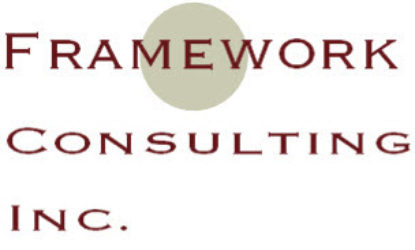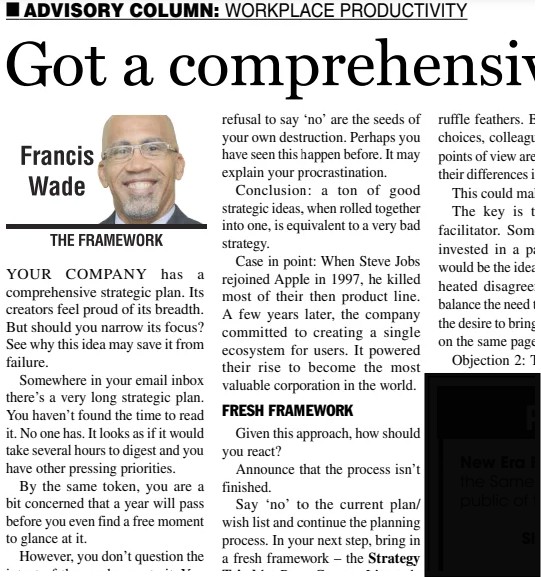Your company proudly touts its “comprehensive strategic plan.” But while its creators are satisfied with its depth and detail, perhaps it’s time to rethink. Narrowing its focus might just save it from failure.
Somewhere in your email inbox, there’s a lengthy strategic document waiting to be read. It’s so long and dense that you haven’t even glanced at it. You’re not alone—no one has. Reading it would take hours, and your plate is already full.
Deep down, you worry that months—or even a full year—might pass before you carve out time to review it. But while the plan gathers digital dust, you don’t question the good intentions behind its creation. You may have even contributed some ideas early on. Yet, because you weren’t part of the team that finalized the document, its nuances escape you.
The responsibility for crafting the final version fell to a group of well-meaning colleagues who embraced the idea of being “comprehensive.” And therein lies the potential problem.
From Strategic Plan to Wishlist
What if the plan is less of a strategy and more of a wishlist? Think of a child’s letter to Santa: an ambitious catalog of hopes, many of which are unlikely to come true.
The issue isn’t that the individual ideas in the plan are bad—on the contrary, you probably support most, if not all, of them. The problem lies in the fallacy that “more is better.” In strategy, this belief can be dangerous. It’s easy for leaders to fall into the trap of saying “yes” to every new proposal, particularly in the C-suite.
But this “yes to everything” mindset often results in an unattainable dream masquerading as a plan. Failing to say “no” plants the seeds of failure.
Perhaps this pattern is familiar. It might even explain your reluctance to engage with the document. After all, a strategy overloaded with too many good ideas often adds up to a bad one.
A Case in Point: Apple’s Comeback
Consider Steve Jobs’ return to Apple in 1997. One of his first moves was to cut most of the company’s product lines. By focusing on a single ecosystem, Apple transformed itself into the world’s most valuable company.
This example highlights the power of focus. Now, how should you respond to your own bloated strategic plan?
Announce: The Process Isn’t Finished
Reject the current wishlist and restart the planning process with a fresh approach. A helpful tool to guide this next phase is Peter Compo’s Strategy Triad, which comprises three components:
- Aspiration – Your primary objective.
- Bottlenecks – The key obstacles standing in the way.
- Tasks and Policies – The actions needed to address the bottlenecks.
Use this framework in your next strategy session to sharpen your focus. Here’s how:
- Start by selecting your single most critical objective.
- Identify the bottlenecks preventing success and narrow down to the few actions required to overcome them.
- Move on to the next objective, applying the same process.
- Eliminate wishlist items that don’t directly address the bottlenecks.
- Prioritize a small number of high-impact initiatives that fit your resources and budget.
While this streamlined approach seems logical, expect resistance.
Handling Pushback
Objection #1: “This Will Be Too Difficult”
Narrowing the plan means forcing tough choices. Colleagues with conflicting priorities will have to confront their differences in open discussions, which can create tension.
The solution? Use a neutral facilitator. A skilled, impartial moderator can help navigate disagreements, ensuring the group reaches consensus without losing focus or momentum.
Objection #2: “This Will Take Too Long”
Don’t assume you can resolve these challenges in a quick meeting. Instead, dedicate a full day to an offsite session with your top 20 leaders. Away from daily distractions, work together to identify the few key initiatives that will “bust” the bottlenecks and achieve your goals.
While this approach requires time upfront, it’s an investment. Begin by showing how many hours would be wasted trying to execute the original wishlist. By narrowing the focus, you’ll save time overall and boost the odds of success.
Why It Works
An overly broad strategic plan is often overwhelming. Your colleagues may avoid engaging with it for the same reasons you do—it feels unrealistic and demotivating. By narrowing the scope, you create a plan that feels achievable and inspires action.
Think of it as a Minimum Viable Strategy. A focused plan speeds up implementation, concentrates energy, and delivers visible results. Success, in turn, builds momentum, paving the way for even greater achievements.
When it comes to strategy, less is often more. Toss the wishlist, narrow the focus, and watch your organization thrive.

